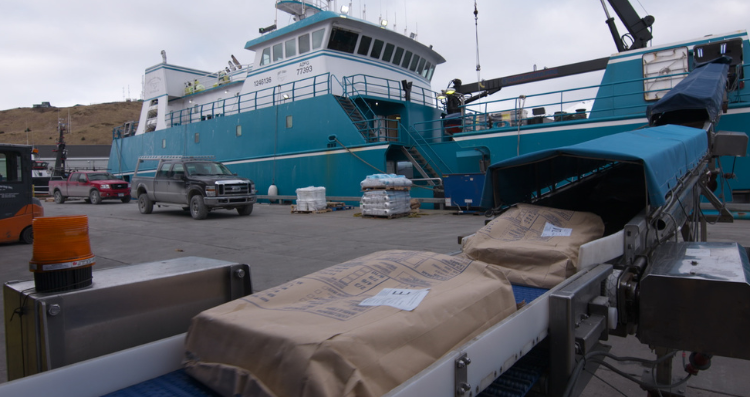The widespread downturn in Alaska’s seafood industry wreaked a $1.8 billion loss and a 50 percent decline in profitability, driven in part by higher costs for labor, energy, and interest rates, according to a new report from the National Oceanic and Atmospheric Administration (NOAA).
The “economic snapshot” by NOAA Fisheries scientists and economists found that the slowdown in Alaska’s top industry had major national implications: more than 38,000 job losses nationwide, and a $4.3 billion loss in total U.S. output of goods and services. Alaska, Washington, Oregon, and California were most affected, with a combined loss of $191 million in state and local tax revenues.
“The Alaska seafood industry is a major contributor to the U.S. seafood sector,” said Robert Foy, director of the Alaska Fisheries Science Center, in a report issued Oct. 9. “The social and economic ramifications of Alaska’s losses have reverberated down the West Coast and across the country.”
“Commercial fisheries have flourished in Alaska for generations, shaping social structures, cultural identity, and robust local economies. Beyond the economic impacts, the decline of fisheries in the region threatens a way of life, sense of place, community, and identity,” said Steve Kasperski, lead author of the snapshot and an economist with the Alaska Fisheries Science Center.
The 2023 downturn so rattled seafood industry leaders that they asked NOAA Fisheries to undertake an independent analysis. The agency team compiled data from fishing boats, processors, and international trade databases, interviewed fishermen, fishing associations, fisheries-dependent businesses and people in Alaska fishing communities.
The economists saw that key factors starting in 2022 included “higher costs associated with increased wages; higher energy prices; higher interest rates.” Through 2023, revenue decreased “due to declining prices for every major species group.”
Researchers documented how in the years following the covid-19 pandemic, seafood retailers and consumers changed their buying patterns.
“For example, retailers have changed how they handle the seasonal influx of seafood products. Historically, retailers would lower prices to clear inventory,” the authors wrote. “However, strong retail demand for seafood during the pandemic as individuals ate at home was followed by a dramatic decline in that demand as restaurants and schools opened up. This meant that retailers were saddled with high-priced inventory and lower demand.”
In response, retailers tried to keep supply lower by slowly moving their inventories out of cold storage in an effort to support their pricing.
“But it also meant seafood producers, processors, and wholesalers in Alaska demanded a lower quantity of seafood,” the report notes. “Retail seafood prices have softened somewhat in 2024, but not by enough to entice consumers to purchase the volumes they bought in 2020–2021.”
International competition is another challenge, after several Russian fisheries obtained Marine Stewardship Council certification “and use the trade name ‘Alaska pollock’ in marketing,” the report says. “This results in sustainable domestic fisheries having less of an edge in the global marketplace. Lower labor and operating costs in production and processing abroad, as a result of lower environmental and labor standards, also hurt our competitive standing.”
Other factors cited in the report include international trade barriers, the effect of a stronger U.S. dollar on international trade, inflation dampening consumers demand for higher-priced seafood, and declines in U.S. seafood processing jobs and plant closures.
“All of this contributed to a 32 percent decline in vessel revenues from 2022 to 2023, totaling $617 million,” according to the report. “And first wholesale values dropped $1.2 billion, or 26 percent. This total direct loss equaled $1.8 billion.”
Meanwhile the Gulf of Alaska experienced ecological as well as economic challenges. The total number of active commercial fishing vessels declined by 29 percent in the Bering Sea and Aleutian Islands from 2003–2023. The number of active seafood processors declined by 32 percent. In the Gulf of Alaska, these numbers declined by 20 percent and 7 percent respectively.
“A marine heatwave in 2017–2018 led to a crash in the highly lucrative snow crab fishery in 2022. It also coincided with Bristol Bay red king crab fishery closures from 2021 to 2023,” the report notes.
“The closures led to a 60 percent loss in its community budget. This deeply impacted this small community, from its leadership down to its citizens and families,” the authors wrote.







